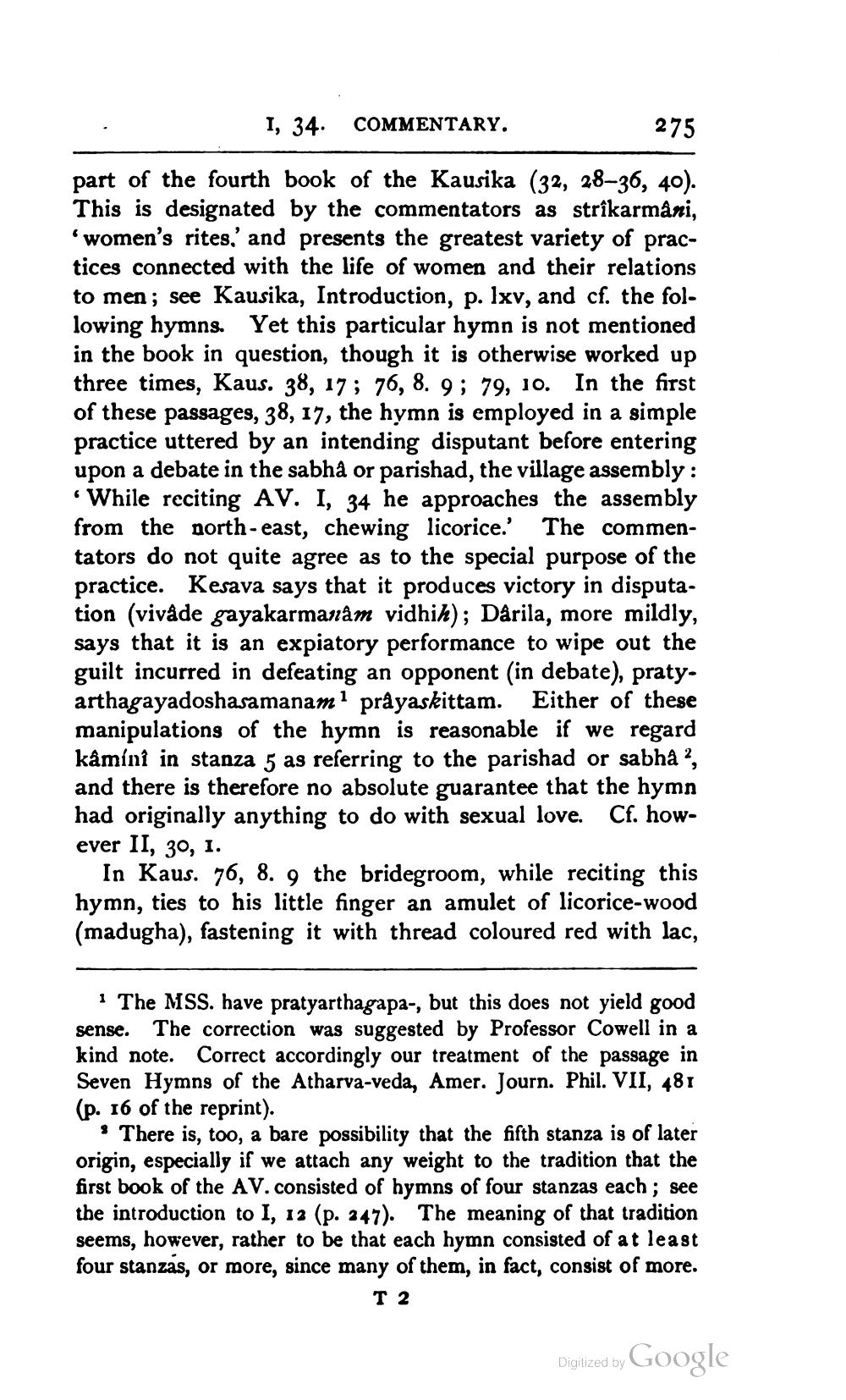________________
1, 34. COMMENTARY.
275
part of the fourth book of the Kausika (32, 28–36, 40). This is designated by the commentators as strîkarmani, women's rites,' and presents the greatest variety of practices connected with the life of women and their relations to men; see Kausika, Introduction, p. Ixv, and cf. the following hymns. Yet this particular hymn is not mentioned in the book in question, though it is otherwise worked up three times, Kaus. 38, 17; 76, 8. 9; 79, 10. In the first of these passages, 38, 17, the hymn is employed in a simple practice uttered by an intending disputant before entering upon a debate in the sabha or parishad, the village assembly :
While reciting AV. I, 34 he approaches the assembly from the north-east, chewing licorice.' The commentators do not quite agree as to the special purpose of the practice. Kesava says that it produces victory in disputation (vivåde gayakarmanam vidhih); Darila, more mildly, says that it is an expiatory performance to wipe out the guilt incurred in defeating an opponent (in debate), pratyarthagayadoshasamanam prayaskittam. Either of these manipulations of the hymn is reasonable if we regard kamini in stanza 5 as referring to the parishad or sabha ?, and there is therefore no absolute guarantee that the hymn had originally anything to do with sexual love. Cf. however II, 30, 1.
In Kaus. 76, 8. 9 the bridegroom, while reciting this hymn, ties to his little finger an amulet of licorice-wood (madugha), fastening it with thread coloured red with lac,
1 The MSS. have pratyarthagapa-, but this does not yield good sense. The correction was suggested by Professor Cowell in a kind note. Correct accordingly our treatment of the passage in Seven Hymns of the Atharva-veda, Amer. Journ. Phil. VII, 481 (p. 16 of the reprint).
* There is, too, a bare possibility that the fifth stanza is of later origin, especially if we attach any weight to the tradition that the first book of the AV. consisted of hymns of four stanzas each; see the introduction to I, 12 (p. 247). The meaning of that tradition seems, however, rather to be that each hymn consisted of at least four stanzas, or more, since many of them, in fact, consist of more.
T2
Digized by Google




